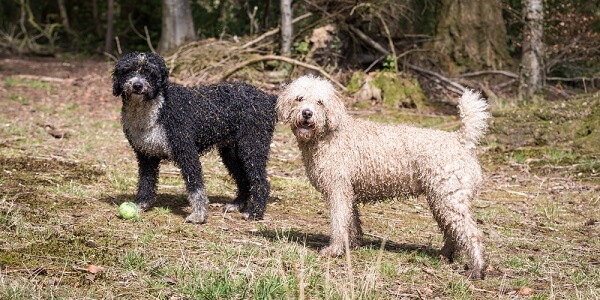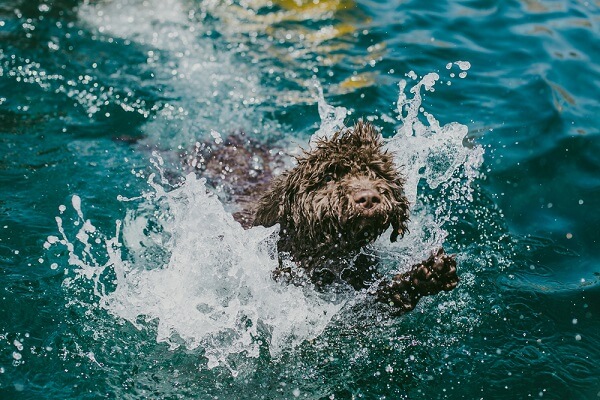
The Spanish Water Dog is a woolly, curly-haired dog breed that specializes in herding and retrieving. The Spanish Water Dog is closely related to other water dog breeds like the Portuguese water dog, the Irish water spaniel, the barbet, and the poodle. These dogs have a distinctive curly coat which can be white, black, brown or any combination of these colors. As their name implies, Spanish water dogs typically love to swim. Often they are used as retrievers and are more than willing to jump into a cold pond to chase after a downed duck. However, the Spanish water dog can also be trained as a herding dog – capable of rounding up sheep or other herd animals. Plus, this breed makes a great family dog. Much like they protect a herd, these dogs will be extremely loyal to a family unit and will protect all of the members of its “pack.” Compared to a Portuguese water dog, the Spanish water dog is slightly smaller, thinner, and has a coat that is more likely to form matted dreads. That being said, the breeds are very close in shape, temperament, and abilities. Both species are highly intelligent and can be trained to do a variety of tasks! The Spanish Water Dog makes a great companion for many owners. But, did you know that the Spanish water dog breed is actually the perfect example of some concepts important to biology? Let’s explore a couple! The theory of natural selection, first proposed by Charles Darwin and Alfred Wallace, states that populations of organisms show variability. Since there are limited resources, individuals compete to survive and reproduce. Those that are most successful pass on their variations, whereas unsuccessful variations are lost to extinction. Artificial selection is essentially the same thing, though the selective force is humans, not the changing environment. The Spanish water dog is an excellent example of artificial selection because this breed has many traits that were clearly selected for. The coat, for instance, is extremely curly – clearly different than the ancestor of all dogs (wolves). Other traits that water dogs display are a propensity for swimming, the ability to herd other animals, and a natural loyalty to their family group. All dog breeds do not share these traits (imagine a bulldog trying to herd sheep). While artificial selection makes it easy for breeders to bring out the traits they want in successive generations, artificial selection has its downsides. For example, the Spanish water dog has higher rates of hip dysplasia, retinal atrophy, hypothyroidism, and a number of other diseases that are seen at higher rates in this breed. This concept extends to other domesticated animals – such as pigs and cows – that now have far more genetic conditions than their wild counterparts. Humans are great at selecting the traits we want, but we are not great at creating species that are extremely healthy and adaptable. Dogs are not naturally great swimmers – not all breeds are competent swimmers. While most dogs are able to keep their head above water, many breeds are not suited for retrieving things from the water. Spanish water dogs have a number of adaptations that make them excellent swimmers. First, water dogs have large paws with slightly webbed feet. This helps them take large strokes and propel themselves through the water. Another trait shared by good swimmers is a body size and shape that enables floating. Some breeds, such as a greyhound, have very little fat content and thick bones. This makes them sink faster than most. The Spanish water dog is a thick breed, with plenty of fat and a round torso that helps them stay afloat. This means that their powerful strokes can be used to propel them forward – instead of simply keeping them afloat.
Kingdom
Animalia
Phylum
Chordata
Class
Mammalia
Order
Carnivora
Family
Canidae
Genus
Canis
Species
Canis familiaris
Niche
Domestic Pet
Height
16-20 in (40-50 cm)
Weight
31-50 lbs (14-22 kg)
Lifespan
Up to 14 years
Social Structure
Pack/Domestic
Conservation Status
Least Concern
Preferred Habitat
Domesticated
Average Litter Size
4-6 puppies
Main Prey Species
Dog Food
Predators
None
The Basics

Interesting Insights from the Spanish Water Dog!
Artificial Selection

Swimming in Dogs

